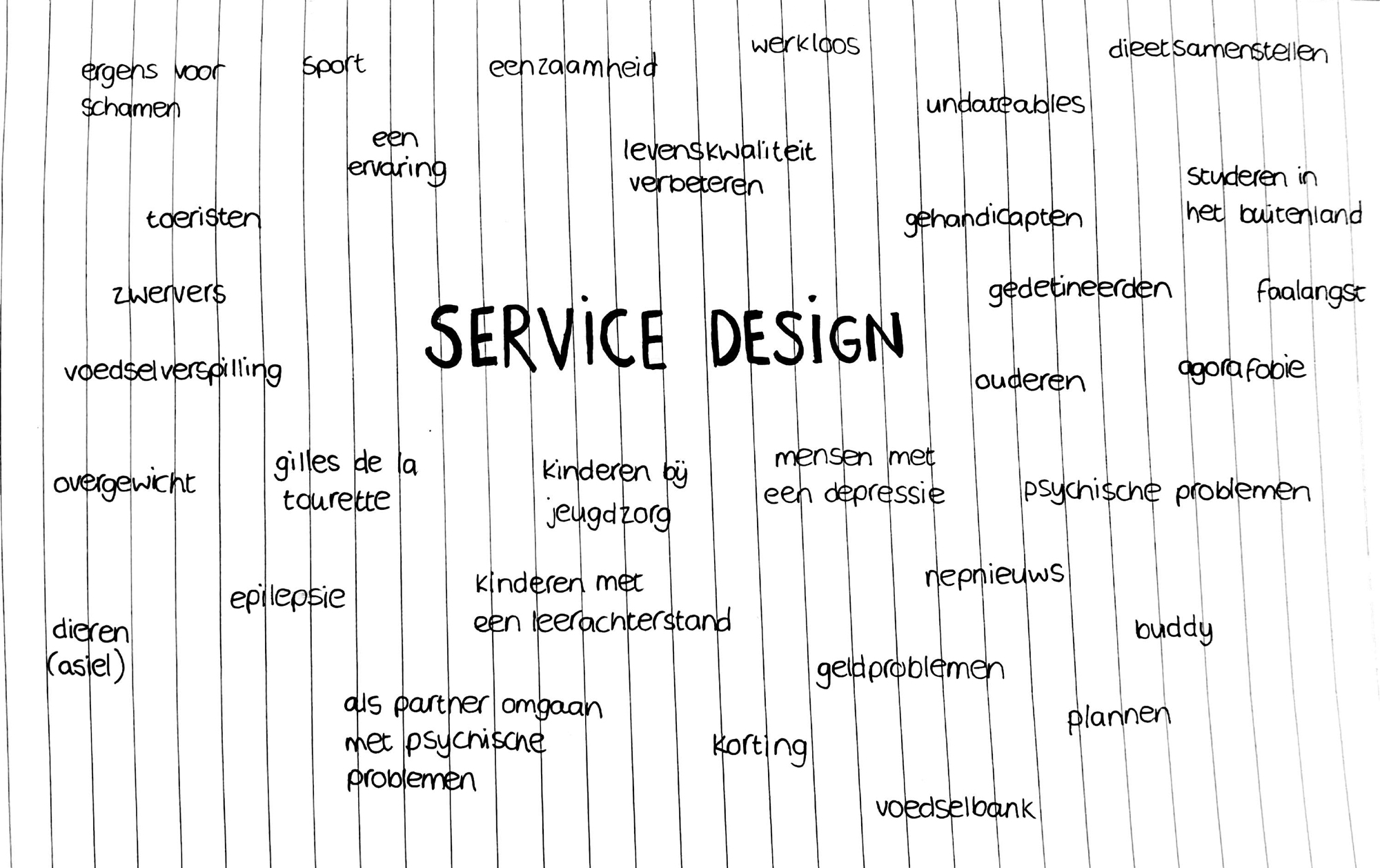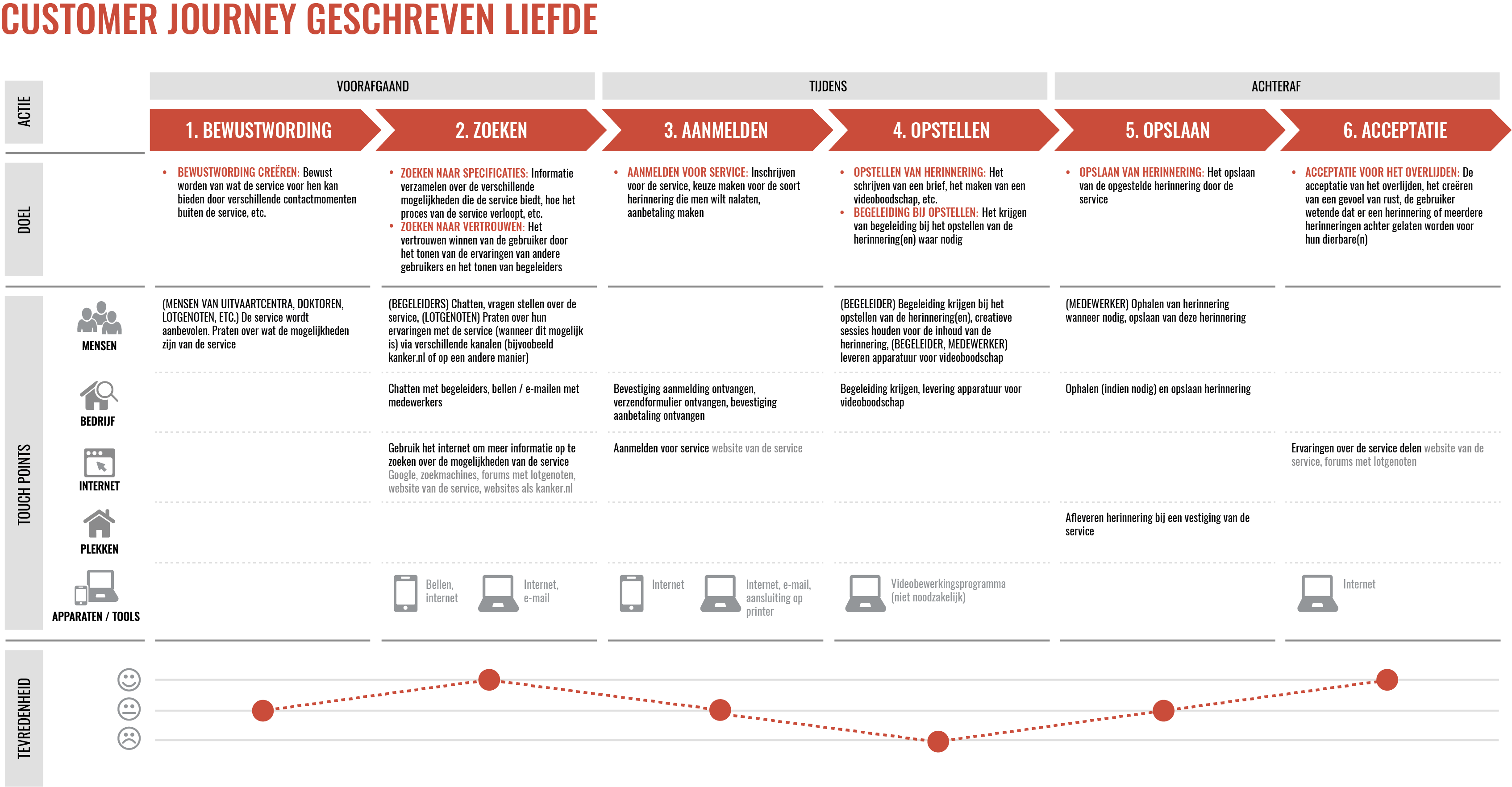GESCHREVEN LIEFDE
Geschreven Liefde, in English "Written Love", has probably been the most powerful, yet difficult project in which I've participated. In this group project, we had to design a service that would have a social meaning. As a group, we decided that we wanted to do a challenging project. We came up with the idea to design something for people who are in the last stages of their lives.
The concept
As a group, we held a brainstorm session at the beginning of the project to come up with some ideas for a service for people who are in the last stages of their lives. One of the first ideas was to make it possible to leave memories behind for loved ones. This idea became the concept of our service.

The final concept for the service focuses on making it possible to leave letters and/or videomessages behind for loved ones when someone knows that his life will come to an end soon. We wanted to give them the oppurtunity to give a concious, but also valuable, farewell to their loved ones. In addition to that, we wanted to provide the sender counseling, if wanted, throughout the process. After the memory is left behind, the service can put it in storage and will send it to the loved one on the date the user would've wanted it to be sent (for example, think of a childs' 18th birthday).
The target group
Because we had a limited amount of time, decided to specify the target group. We chose to focus us on young terminally ill people. A target group in which some of them have a young family as well.
Getting in contact with the target group to do research was too difficult, too painful, and it probably would've been the last thing the target group wanted. However, we found other ways to do research. Among other thing, we watched a Dutch series about young terminally ill people who are filling a memory box during the series and we held a questionnaire to gather more information about the target group.
We also held brainstorm sessions with people who have been in close contact with terminally ill or seriously ill people and people who had been sick themselves. All of this resulted in a good image of the target group.
The service
Over a period of ten weeks, we designed the actual service. We designed a logo, a website, and even a form with which the sender can send his memories to our service. I won't go too deep into the details of the service, but I will show the customer journey I made. You can see the customer journey below in Dutch. There'll be given an explanation of the customer journey underneath the image in English.

The customer journey has been devided in three phases. The first phase is before the user will use the service, the second phase is during the usage of the service, and the last phase is after the service has been used. Each phase has been divided in two subphases.
The first phase is prior to usage of the service. This phase is divided in two subphases, Awareness and Searching. The subphase Awareness is about creating awareness about the service for the user. The user becomes aware of what the service can mean for him because of different contact moments that take place outside the service. For example, the user reads about the service on a blog with people that share the same fate. The next subphase is Searching. In this subphase, the user will be searching for more information about the service. Besides that, the user will be looking for faith in the service.
When the user decides to use the service, he will go to the second phase of the customer journey. This phase is divided in the two subphases Sign up and Setting up. In the subphase Sing up, the user will register for the service and he will make a decision what kind of memory he wants to leave behind. In the subphase Setting up, the actual memory will be created. If the user wishes so, he can get counseling during this process.
After the memory is made, the user will go the the last phase of the process. The subphases of this phase are Storaging and Acceptation. The subphase Storaging means that the memories will be collected by the service in order to storage them. In the last subphase Acceptation, the user will, in some sort of way, accept that he is going to die. Through leaving memories behind and the idea that these memories will be delivered to the loved ones of the user, we hope that the user will get somewhat more peace in the last stage of his life.